How braces work and the many types of braces?
How Do Braces Work?
Having straight teeth is important. Teeth that are crooked or out of place (misaligned) affect the way a person chews and talks and how their smile looks (Severe Malocclusion). Because they have unnatural spaces, crooked teeth are harder to clean and are more likely to have cavities.
In some cases, crooked teeth can affect the way the jaws line up and can cause pain and discomfort. Crooked or misaligned teeth can cause gum disease, food impacted in between, cavities.
One method to correct this is to have Orthodontic treatment (or braces and retainers as they are sometimes called). Orthodontic treatment works by exerting a gentle pressure over time to straighten teeth that are growing or have already grown, out of place.
Braces have three basic parts:
- Brackets – brackets that are attached to each tooth
- Bonding or band – the material that attaches the bracket to the tooth
- Arch Wire – a thin metal wire that runs from bracket to bracket
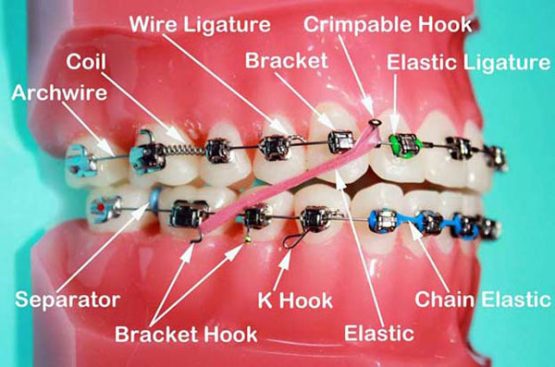
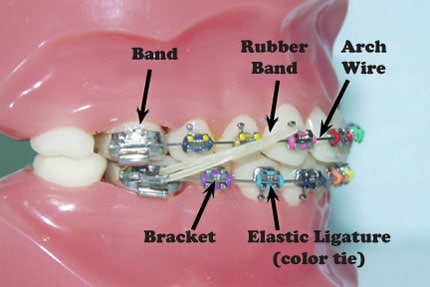

Braces have come a long way from the “train track” look of years ago. Today, many orthodontic patients can get braces that attach to the backs of the teeth or use transparent brackets. A retainer is a custom-made, removable appliance that helps keep teeth in their new, straightened position after braces have been removed. Retainers can also be used to treat more minor orthodontic problems.
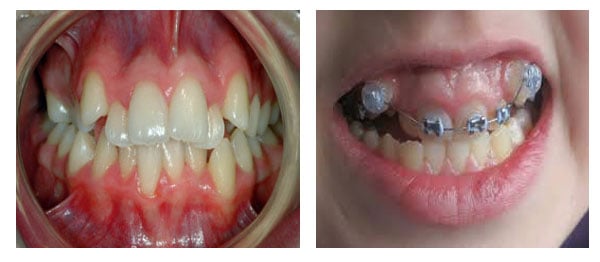
Braces For Adults
Adults are busy people juggling work, family, and friends! We understand you want a treatment that is Invisible, Efficient, and Fast. We will study both your face and smile. Only by understanding how your smile plays a part in the overall facial aesthetics, can we arrive at a treatment plan that targets your unique problem.
We listen! Share your concerns, even your fears, with us. Let us know how you want braces to integrate into your daily life. From there, we can fine-tune your treatment plan together to be truly one that you are comfortable with.
Braces For Tooth Replacement Therapy
When a tooth is lost, teeth next to space start to fall in and opposing teeth migrate into space. The dental centerline begins to shift and strange small spaces appear here and there. Pretty soon the dentist who wants to replace the missing teeth can’t do it. There is just not enough space for a replacement tooth of the correct size and shape to be placed in the right position. That’s where I come in.
Other times, the problem is a badly decayed tooth. Should it be saved? Let’s sit together and discuss it. After weighing the pros and cons of various treatments, sometimes it's better (and more cost-effective!) to remove the rotten tooth and use braces to close up space. You exchange the rotten tooth for a beautiful, and healthy smile. It’s a win-win situation!
Braces For Surgery-First Jaw Correction
Some patients have jaws that do not match. The jaw may be too big or small or too long or short; asymmetrical or simply cannot bite properly. This problem not only affects aesthetics but also one’s self-esteem and health.
Patients with small lower jaws are prone to sleep apnea, which is a serious sleep disorder with health risks. The short lower jaw also causes the front teeth to protrude and can fracture terribly during a fall.
Speech is difficult and words hard to pronounce when there is a serious under-bite or open bite. Imagine how frustrating it is when eating simple things like noodles or cutting through bread and pizzas becomes difficult.
Often these patients want to re-balance their jaws and have waited for a long time. It’s constantly weighing on their minds, affecting their self-confidence.
Oral Maxillofacial Surgeons and together, we are proud to provide patients with Surgery-1st Jaw Correction. This method can greatly reduce the overall treatment time. The best part is that corrective jaw surgery is done earlier on in treatment. Therefore you benefit from a balanced facial profile earlier.
Learn more: How much do braces cost in Vietnam?
Types of Braces
Ceramic Braces
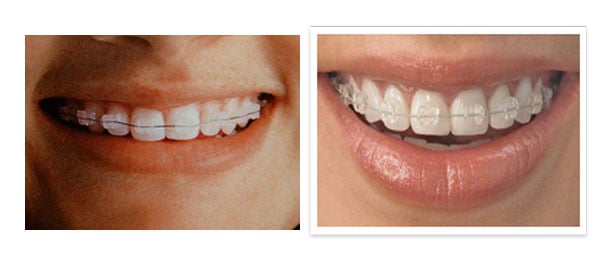
There are now a number of options for consumers to straighten misaligned or wrongly angled teeth. You can have the traditional metallic braces which are proven to do the job but are plagued with a few unwanted disadvantages such as looking unsightly when smiling apart from clinically causing tooth decay and shortening of tooth roots.
One of the better options out there is using ceramic braces made of composite materials. They come in varying levels of transparency so you have ceramic braces that can take on the natural color of the teeth or are thoroughly translucent to be called clear ceramic braces and they do not stain.
Most adults prefer ceramic braces because they blend in with the color of the teeth and are cosmetically less noticeable than metal.
Clear ceramic braces are made of ceramic alloys. Because of their transparency, they also have a great following, especially among adults who are to correct their buckteeth but without shouting to the world, they’re being corrected every time they smile.
The main edge of ceramic braces is their aesthetic and cosmetic appeal. The ceramic brackets do not stain but the clear elastic wires or ties holding the brackets to your teeth stain, especially if you smoke, eat a lot of curry or drink loads of coffee. But these ties are changed every time an adjustment is made, usually, monthly.
Metal braces (traditional braces)
These are the metal brackets and wires that most people picture when they hear the word “braces.” However, modern brackets are smaller and less noticeable than the notorious “metal-mouth” braces than many adults remember.
Pros: Least expensive type; colored bands give kids a chance to express themselves.
Cons: The most noticeable type of braces.
Lingual Braces

Lingual braces are the same as traditional metal braces, except that the Brackets and wires are placed on the inside of teeth
- Pros: Invisible from outside.
- Cons: Difficult to clean; more expensive; not appropriate for severe cases; can be more uncomfortable at first; regular adjustments take longer and are more difficult than with traditional braces.
Invisalign braces
What is Invisalign?
Invisalign is at the forefront of cosmetic dentistry technology. Unlike the more traditional braces or retainers, Invisalign is a virtually invisible method of straightening your teeth. You will be fitted with removable, see-through aligners that have been specifically crafted to fit your teeth.
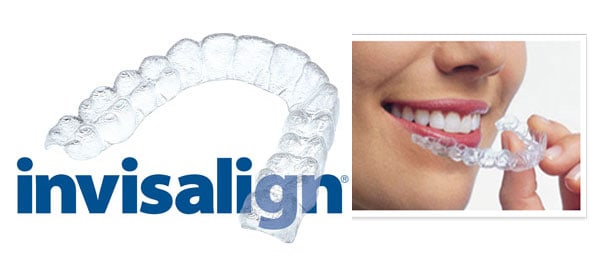
The aligners will gradually cause your teeth to shift their position slightly over a period of two weeks. Every two weeks, you will change the aligners for a new set that will cause your teeth to move a little more. As the treatment progresses over the following weeks and months, your teeth will straighten into their proper positions, as prescribed by your dental practitioner.
Before your treatment begins, a virtual 3D plan will be created, showing how your teeth will move throughout the course of your treatment, so before your treatment even begins you will be able to see what the finished result will look like, then, each custom-made set of aligners is produced specifically for you to help you achieve exactly the smile you desire.
Services
Working Time
- Monday - Friday: 08:00 - 19:00
- Saturday: 08:00 - 18:00
- Sunday closed
Contact Info
- Hotline 1: (+84) 908 321 455
- Hotline 2: (+84) 931 857 885
- Mobile: (+84) 8 3925 8778
- Phone: (+84)2 838 258 778
- info@dentalrose.net
- rosedentalclinicvn@gmail.com
 English
English  Tiếng Việt
Tiếng Việt

